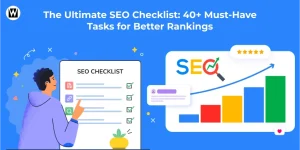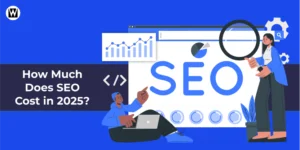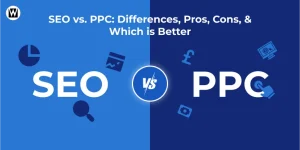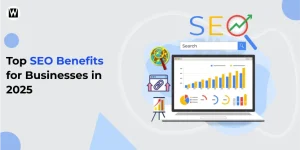SEO ROI: What It Is, How to Calculate and Maximize It in 2025
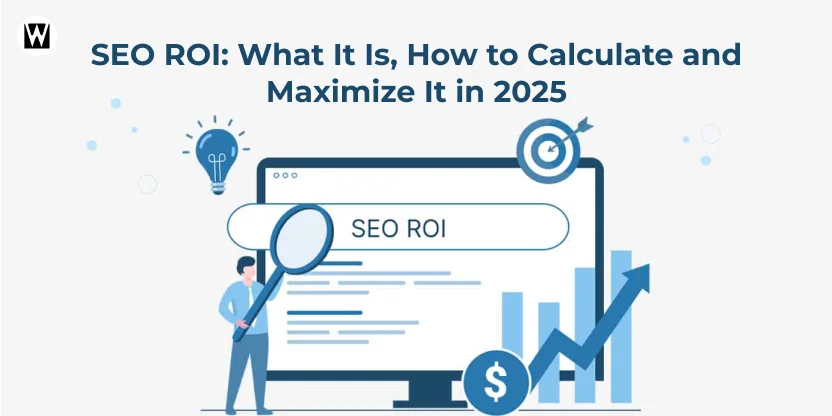
Consider SEO as a tree-planting process. You’ve done the work in advance—planting the right dirt, sowing the seeds, watering a day at a time. As time goes by, it starts growing, and then as the years go by, that tree grows fruit. Yes, it requires patience, but the reward? It’s worth it.
Whereas with pay-per-click ads, think of it like your rent on an apartment, your payments grant you temporary visibility for a limited amount of time, SEO is an investment in your online presence that compounds over time. There may be some lag time before you see major changes — typically a few months — but once it’s up and running, your website can withstand a long-term source of, consistent traffic without out-of-pocket expenses on an ongoing basis.
SEO ROI is more than just optimizing your site in 2025; it’s also about understanding the greater context, including keeping up with SEO trends. How can you tell if the tree you’ve planted is thriving? How do you assess the outcome of your efforts? For business owners and marketers alike, the method to calculate and maximize your SEO ROI is critical.
What is SEO ROI?
In simple words, SEO ROI is what measures the value of your time, energy and/or resources you’ve spent on SEO activities vs the results you’ve got in return like traffic, leads, sales, etc.
In other words, it shows you whether your SEO efforts are paying off.
Let’s say you own an online store that sells handmade candles. You spend 6 months SEO-ing your website—IF blogs on candle care, optimal SEO-ing your product pages, and getting backlinks off related websites.
Before the optimization, you had approximately 1,000 visitors each month, closing 20 sales. 6 months down the line, you now have 5,000 visitors per month and are doing 100 sales. What this means is that the investment you made in SEO drove a whole heck ton of traffic and that traffic turned into sales, plain and simple.
In other words: The way to look at SEO ROI is to solve for all the additional revenue or sales you can reasonably attribute to your work to improve your site’s ranking in search engines like Google. Here, the return on investment is the increase in sales through more traffic driven by better SEO practices.
How to Calculate SEO ROI?
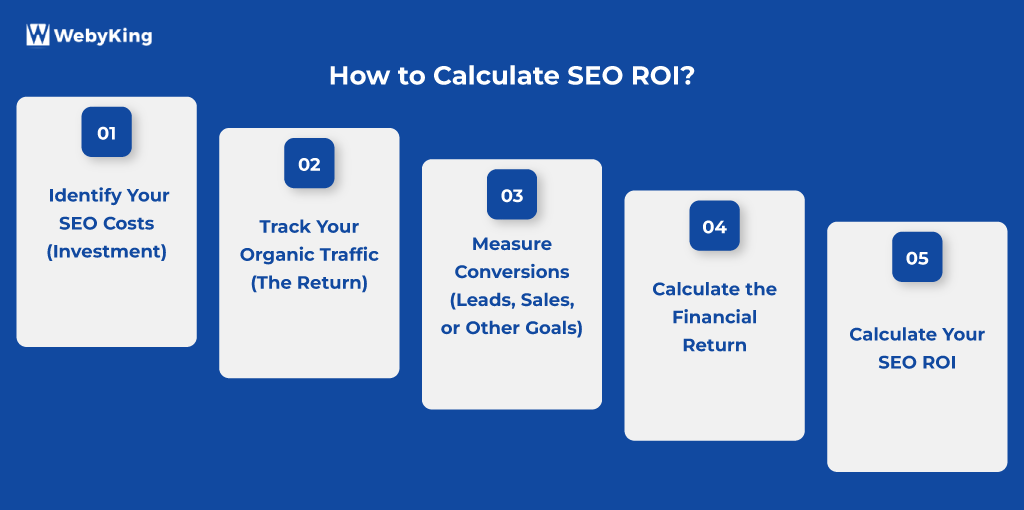
Measuring SEO ROI might seem like a daunting task, but once you simplify it into basic steps, it’s quite simple! Just as you would track income and expenses for a business;
SEO ROI has a similar premise: you track what you invested and measure what you got from it. Let’s walk through how to effectively calculate your SEO ROI step-by-step.
1. Identify Your SEO Costs (Investment)
But before you can measure any returns, you first need to determine the dollar amount you’ve invested in SEO. And that includes both direct and indirect costs:
- Direct Costs: This includes the more visible costs associated with hiring an SEO agency, paying for SEO tools (e.g., Ahrefs, SEMrush, Moz), or bringing in third-party content creators.
- Indirect Costs: This can also include time that your team spends creating content, technical SEO, or doing link building. For in-house SEO, you’ll need to get into how much you’re spending on employee or contractor salaries.
For example:
- You can pay $3,000 per month to an SEO agency.
- SEO tools can cost you, like $500 a month.
- Content creation and technical SEO would be about 20 hours worth of work per month, around $1,000 per month.
- So if you’re spending $4,500 a month on SEO, that’s your starting cost.
2. Track Your Organic Traffic (The Return)
After finding out your SEO Investment, the next step is to track the organic traffic reaching their website through search engines such as Google. Organic traffic refers to any visitor to your website via unpaid search results.
Here are some solutions that can help you track it:
- Google Analytics: This is the analytics tool you will use to determine how much traffic your website is receiving. Check the Acquisition > All Traffic > Channels report to find out how much of your traffic hits you up—from organic search.
- Google Search Console: This platform will provide you with data about the position in which your pages are ranking in search results and how many impressions and clicks you get through the organic search.
For instance, you might see that your organic traffic jumps from 1,000 visitors per month to 5,000 visitors per month, a big jump after 6 months of SEO effort.
3. Measure Conversions (Leads, Sales, or Other Goals)
Traffic is terrific, but that’s not the whole story. That’s where the real value is, though — in conversions, whether that’s sales leads or email signups. Because what’s the use of all those visitors if they are not doing anything?
It all starts with your conversion goals. Are you tracking:
- Sales? For an eCommerce site, this could be an order made on your site.
- Leads? If you are a service-based business this could mean the number of people who fill out your contact form.
- Email Sign-ups? For blogs or newsletters, this might be the number of people who have subscribed to your mailing list.
If you want to follow your conversions, Google Analytics and your heat maps tools like Hotjar (for heat maps) or OptinMonster (for conversion rate optimization) are for measuring exactly what’s happening with your visitors — measuring what they’re doing.
Let’s say your online store got more organic traffic through to its product pages; what went from 1,000 unique visitors a month increased to 5,000, and with that, your sales increased from 20 sales a month to 100 sales a month and that’s a significant return.
4. Calculate the Financial Return
- Average Order Value (AOV): If your site is eCommerce, you will want to know the $ amount you earn, on average, for each sale. If each sale, for instance, brings in $50, and you’re getting to 100 sales as opposed to 20, your revenue growth is $50 x 80 = $4,000.
- Lead dollar value: Are you generating leads? Assign a value to each lead. What does this mean in dollars and cents? For example, say your plumbing business had an average value of a lead of $200 and you went from receiving 10 calls per month to 50 calls a month, that’s $200 x 40 = $8,000.
5. Calculate Your SEO ROI
The last step is the most important: calculating the ROI.
The Formula for SEO ROI:
SEO ROI=Return from SEO−Investment in SEO investment in SEO×100 \text{SEO ROI} = \frac{\text{Return from SEO} – \text{Investment in SEO}}{\text{Investment in SEO}} \times 100
Consider the eCommerce example we looked at earlier:
- Return (Income from additional sales) = $4,000
- Investment = $4,500
SEO ROI=4000−45004500×100=(−5004500)×100=−11.11%\text{SEO ROI} = \frac{4000 – 4500}{4500} \times 100 = \left( \frac{-500}{4500} \right) \times 100 = -11.11%\
In this example, your SEO ROI is -11.11%, indicating that you remain out of the positive after 6 months.
But keep in mind that SEO is a long-term game and you might not get a lot of return in the first 6 months or a year, however, your organic traffic will increase over time.
Challenges to Determining ROI
Long Timeframes for Results
Tracking Organic Conversions
Influence of External Factors
SEO doesn’t work in a vacuum. There are dynamic variables involved such as external updates (like Google Algorithms), consumer behaviour, and competitors’ actions which could utterly change your rankings.
These sporadic swings can cloud your ability to connect the dots between what you did with your SEO, with any subsequent traffic or sales changes.
Difficulty in Assigning a Monetary Value
Lack of Clear Benchmarking
How to Improve Your SEO ROI?
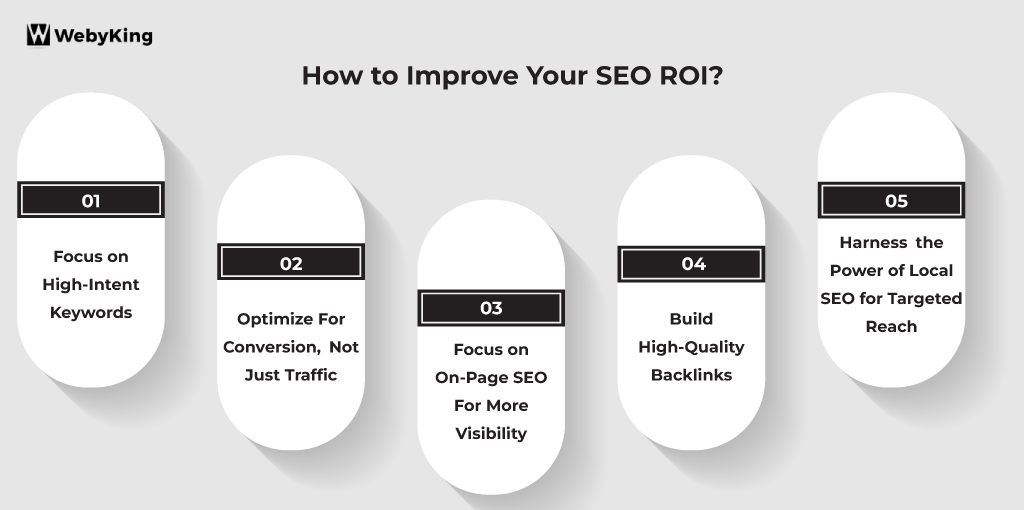
The secret to improving your SEO ROI isn’t some magic formula — rather, it’s all about strategy, optimization, and effective implementation based on data and results. Understanding the SEO benefits for businesses can help in crafting a long-term strategy that drives growth and revenue. Be patient, but constantly refine your tactics to ensure that the traffic you are getting is, indeed, traffic that converts.
Focus on High-Intent Keywords
There’s no such thing as a level playing field when it comes to keywords. Sure, ranking for generic terms like “shoes” can bring you traffic, but — if you’re targeting visitors who aren’t in a buying mindset, that traffic is effectively worthless. Instead, focus on high-intent keywords that match what your audience is looking for when they’re in the action stage.
For instance, if you are selling running shoes and you can get traction on “best running shoes for women” or “buy running shoes near me,” it is likely that whoever is searching those keywords has purchase intent and is more likely to convert.
When you use long-tail, high-intent keywords, your conversions jump by 64% (Source: SEMrush).
Optimize For Conversion, Not Just Traffic
Whilst driving traffic to your site is key, converting those visitors is even more important. What’s the use of 10,000 visitors if they don’t register, buy, or interact with your brand? A perfectly optimized website can convert visitors into paying customers.
Even a modest 2% improvement in conversion rate can yield big returns — if you’re driving meaningful traffic.
Use clear calls to action (CTAs), such as “Buy Now,” “Sign Up,” or “Get a Free Quote,” that lead visitors towards your desired action.
Focus on On-Page SEO For More Visibility
On-page SEO is as simple as it gets, making it one of the most effective ways to achieve higher rankings and pull in relevant traffic.
Optimized titles, headers, and meta descriptions not only assist with rankings but also assist users in evaluating what your page is primarily about. And better user experience means a higher chance of a better ROI.
Backlinko states that web pages with optimized on-page elements receive 434% more indexed pages. Ensure that every page on your site has a distinct and keyword-rich title and meta description.
Build High-Quality Backlinks
- Get Backlinks Only from Relevant, Authoritative Sites
- Write quality guest posts on powerful sites to get backlinks to your site.
Harness the Power of Local SEO for Targeted Reach
If your business caters to a specific geographical region, a Local SEO service can be a game-changer. Optimizing for local search ensures your business shows up when nearby customers are actively looking for the products or services you offer. Google’s local search results typically convert better, as users are often seeking immediate solutions.
78% of mobile location-based searches lead to an offline purchase (Source: Google)
By listing in local directories, including Yelp and Bing Places and local business chambers, trust is built, and visibility improves.
Let’s Get More Conversions from Your SEO Efforts!
Is SEO Worth It? Where to Put Your Money in 2025
SEO is remarkably valuable, and the return in 2025 comes from concentrating efforts where they can be most fruitful.
Although there are a lot of businesses that depend on paid ads for rapid data, SEO provides long-term benefits.
- Focus on capturing the traffic of ready-to-buy audiences by targeting high-intent keywords, optimizing your website’s on-page elements to ensure visibility, and securing high-quality backlinks to build authority.
- Local SEO also and meeting user needs, like swift load times and mobile responsiveness, are becoming critical as search engines increasingly reward these areas.
A local bakery, for instance, has optimized for keyword citations like “best cupcakes near me” and “fresh bakery in New York” after investing in SEO.
Their website began to rank high in the local search results. In six months, they experienced a 30% increase in foot traffic, received more visibility and saw a 15% increase in sales. This was further proof that with the right strategy, SEO can provide excellent ROI and doesn’t require continuous investment in ad spend.
How Can WebyKing Help You Maximize Your SEO ROI?
In summary, SEO is most certainly not going anywhere, and with internet ecosystems continuing to shift in the years to come, there has never been a more relevant time to focus on ROI-driven SEO strategies. WebyKing is to drive businesses to the top of the chart with guaranteed results on every single dollar worth of SEO you spend on us.
Whether it’s targeting high-intent keywords to optimizing your site for conversions, we focus on organic traffic that converts! We follow the proper and effective SEO practices that offer sustainable growth and a competitive advantage for you that lasts.
Start your SEO journey here—contact us and enrich your online presence with us.
Frequently Asked Questions
What is SEO ROI?
Why is SEO important for my business?
How can I improve my SEO ROI?
How do I calculate SEO ROI?
Calculate SEO ROI: Track total revenue generated by organic search — Your SEO investment. Divide this amount by your total SEO cost and multiply by 100 to determine your ROI percentage.
Is local SEO part of SEO ROI?
How can I track SEO ROI? What tools can help me track SEO ROI?
Tools such as Google Analytics, SEMrush, Ahrefs, and Moz can measure your SEO performance. They offer information about organic traffic, keyword rankings, conversions, and backlink quality that can determine the return on investment (ROI).
Whether you’re upgrading technology, improving performance, or rebranding your business, this checklist ensures a smooth and successful migration every step of the way. Get Your Free Checklist Now!


Ravi Makhija, the visionary Founder and CEO of WebyKing, is a seasoned digital marketing strategist and web technology expert with over a decade of experience. Under his leadership, WebyKing has evolved into a premier full service web and marketing agency, delivering innovative solutions that drive online success. Ravi’s deep understanding of the digital landscape combined with his passion for cutting-edge technologies empowers him to consistently exceed client expectations and deliver results that matter.

